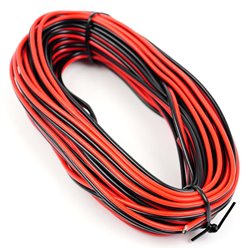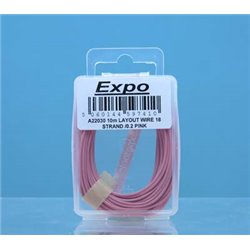There are a number of different options for attaching figures such as a horse and rider to a layout. Perhaps the...
No products
Product successfully added to your shopping cart
There are 0 items in your cart. There is 1 item in your cart.
Search Tips
What size wire should I use for wiring my model railway layout?
The size of wire you should use for wiring your model railway layout depends on several factors, including the scale of your layout, the length of the runs, and the current requirements of your locomotives and accessories. Here are some general guidelines for choosing the appropriate wire gauge:
1. Track power:
- For smaller scales like N or OO, 1.5mm² or 1mm² wire is typically recommended for the main bus wires carrying power to the track.
- For larger scales like O or G, you may need heavier gauge wires like 2.5mm² or 4mm² to handle the higher current draw.
2. Accessory power:
- For powering accessories like lights, signals, and point motors, 0.75mm² or 0.5mm² wire is often used.
3. DCC and control bus:
- For DCC (Digital Command Control) layouts, you'll need twisted-pair wire or special DCC bus wire for the control bus, which carries data signals. Typical gauges include 0.5mm² or 0.35mm².
4. Length of runs:
- Longer wire runs may require a heavier gauge to minimize voltage drop. For runs over 3-5 metres, you may want to step up to a larger gauge wire.
5. Power districts:
- If you're dividing your layout into power districts, you'll need appropriate gauge wires for the feeder wires within each district, based on the current draw and distance from the power source.
6. Feeders:
- For track feeders, 0.35mm² or 0.25mm² wire is commonly used, as these are short runs from the bus wires to the track.
It's generally better to use a slightly heavier gauge wire than you think you'll need, as this will help minimize voltage drop and ensure reliable power delivery. Additionally, using stranded wire is recommended, as it's more flexible and less prone to breaking than solid wire.
When in doubt, consult with experienced modellers or refer to recommendations from reputable manufacturers or organisations like the Gauge O Guild or the OO Gauge Society for your specific scale and layout requirements.
Click here to receive the tips weekly in your mailbox. You can unsubscribe at any time.










